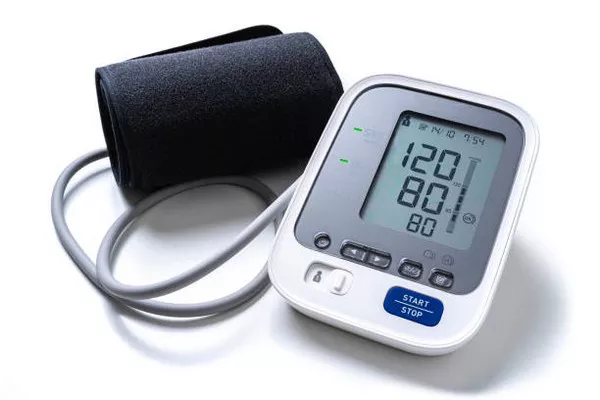A seal gauge is a specialized instrument used primarily in mechanical and industrial applications to ensure the integrity and accuracy of sealing systems, particularly in fluid or gas containment. Unlike conventional pressure gauges or flow meters, a seal gauge specifically measures the condition and effectiveness of seals, such as those found in pumps, valves, compressors, and other critical machinery. These gauges are essential for detecting leaks, pressure drops, or seal degradation before they escalate into costly failures.
At its core, a seal gauge operates by monitoring pressure differentials, fluid levels, or physical displacement related to seal performance. The gauge can be mechanical or digital, often integrating with broader instrumentation systems to provide real-time data. This capability allows engineers and maintenance teams to track the health of seals under operational conditions, optimizing safety and operational efficiency.
Types of Seal Gauges and Their Applications
Seal gauges come in various configurations, depending on the specific sealing technology and application environment. Common types include mechanical dial gauges, electronic displacement sensors, and pressure-sensitive devices such as compound gauges that measure multiple parameters simultaneously.
In heavy industrial settings such as petrochemical plants, power generation, or manufacturing lines, seal gauges are integral to monitoring seals in high-pressure pumps and compressors. Here, they detect early-stage wear or failure by measuring subtle changes in seal pressure or displacement. In automotive and aerospace industries, precise seal monitoring ensures the reliability of hydraulic and fuel systems.
The Principle Behind Seal Gauges
The fundamental principle of a seal gauge revolves around detecting discrepancies in pressure or physical alignment that indicate seal failure. For instance, in a pump seal, a properly functioning seal maintains a stable pressure differential between the fluid inside and outside the seal chamber. A seal gauge measures this differential, and any deviation signals potential leakage.
Other designs use displacement measurement, where a sensor monitors the movement of a sealing element relative to a fixed reference point. Changes in this movement reflect wear, deformation, or improper installation, prompting timely maintenance.
Key Benefits of Using Seal Gauges in Mechanical Systems
Seal gauges offer several critical benefits that contribute to the longevity, safety, and efficiency of mechanical systems:
- Early Leak Detection: By continuously monitoring seal conditions, these gauges enable early identification of leaks, reducing the risk of environmental contamination, safety hazards, and expensive downtime.
- Improved Maintenance Scheduling: Data from seal gauges allows predictive maintenance, shifting away from reactive approaches and minimizing unplanned stoppages.
- Enhanced System Reliability: Maintaining seal integrity is vital to ensuring system performance, especially in high-pressure and hazardous environments.
- Cost Efficiency: Preventing catastrophic seal failure reduces repair costs, loss of materials, and potential regulatory fines related to leaks or spills.
- Compliance with Safety Standards: Many industries mandate stringent monitoring of seal conditions to comply with safety and environmental regulations.
Integration with Instrumentation and Monitoring Systems
Modern seal gauges are often integrated into advanced instrumentation networks, feeding data into centralized control systems. This integration facilitates remote monitoring, automated alerts, and historical trend analysis, all of which enhance operational decision-making. For example, coupling seal gauges with digital pressure gauges or digital pressure gauge systems allows engineers to correlate seal health with overall system pressure fluctuations, identifying root causes faster.
Choosing the Right Seal Gauge for Your Application
Selecting the appropriate seal gauge depends on several factors, including the operating environment, pressure range, fluid type, and required sensitivity. Mechanical gauges are suitable for harsh environments where electronic sensors may fail, while digital gauges provide superior accuracy and data logging capabilities. Additionally, considerations around ease of installation, maintenance, and compatibility with existing systems play crucial roles in the decision-making process.
Challenges and Limitations of Seal Gauges
While seal gauges are invaluable, they also come with challenges. Mechanical gauges can suffer from wear and calibration drift over time, reducing accuracy. Digital gauges require power and can be vulnerable to electronic interference. Moreover, interpreting seal gauge data correctly demands skilled personnel to avoid false positives or missed warnings. Therefore, proper training and routine calibration are essential to maximize the benefits of these instruments.
Conclusion
A seal gauge is a vital tool in ensuring the reliability, safety, and efficiency of sealing systems in mechanical engineering. By providing precise, continuous monitoring of seal conditions, these gauges enable early detection of leaks, optimized maintenance scheduling, and compliance with stringent safety standards. Integrating seal gauges into broader instrumentation systems enhances their value, offering engineers a powerful solution to manage sealing performance proactively. Despite some challenges, advances in technology promise even greater capabilities in the near future, solidifying the seal gauge’s role as an indispensable component of modern mechanical systems.
FAQs
What industries most commonly use seal gauges?
Seal gauges are widely used in industries such as petrochemical, power generation, automotive, aerospace, and manufacturing, where fluid or gas containment is critical to safety and performance.
How do seal gauges differ from traditional pressure gauges?
While traditional pressure gauges measure the pressure of fluids or gases within a system, seal gauges specifically monitor the integrity and performance of sealing elements, often focusing on pressure differentials or displacement related to seal health.
Can seal gauges be integrated with digital monitoring systems?
Yes, modern seal gauges often integrate with digital control and monitoring systems, allowing for real-time data analysis, remote monitoring, and predictive maintenance.
What maintenance is required for seal gauges?
Regular calibration, inspection for mechanical wear, and ensuring clean sensor environments are typical maintenance requirements to keep seal gauges accurate and reliable.
Are there different types of seal gauges for various sealing technologies?
Yes, seal gauges are designed to match specific sealing technologies, such as mechanical seals, lip seals, or gland packing, and come in mechanical or electronic forms based on application needs.

